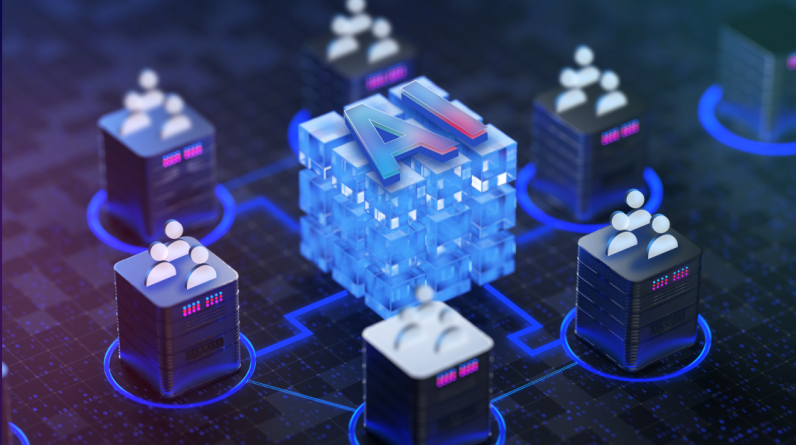
What are AI Use Cases?
AI use cases refer to specific applications of artificial intelligence designed to solve cybersecurity challenges or perform tasks more efficiently. These use cases range from automating cybersecurity processes to enhancing decision-making in complex security environments. AI’s ability to adapt and learn makes it a critical tool for security teams, helping them operate more effectively and address the growing landscape of cyber threats.
In this blog, we explore several AI use cases in cybersecurity that can be accomplished through AI-enhanced security automation platforms.
AI and Automation in the Last Mile of Security Operations
While AI is often leveraged for threat detection in cybersecurity, the real challenge lies in the last mile of security operations: the response. The security community has become highly skilled at detecting potential threats, but it’s the operational work required to resolve incidents where things become difficult, time-consuming, and often inefficient. AI-enhanced automation isn’t focused on detection alone but addresses the critical need for streamlined, effective response. By automating complex workflows and orchestrating actions across various security tools, AI-enhanced automation helps SOC teams close the gap between detection and resolution. AI-driven detection tools are essential, but it’s the ability to respond to those detections—efficiently, consistently, and at scale—that makes the difference.

Swimlane’s focus is on empowering SecOps teams to resolve incidents faster and more accurately by automating the operational processes that are traditionally manual and painful. While AI continues to evolve, the groundwork laid by automation provides a clear path for how AI can complement security response efforts without replacing human oversight where it’s most needed.
How to Identify AI Use Cases?
Automation has been enhancing SOC teams’ capabilities for over a decade, laying the foundation for AI’s recent surge in adoption across the cybersecurity industry. This long-standing experience with automation—where tools have been acting on behalf of humans—has informed how AI can be integrated into SecOps. It also helps establish clear guidelines on when humans need to step in during AI-driven processes. While AI has gained traction in SecOps over the past few years, its evolution is informed by automation use cases across industries, showing where AI can be applied most effectively and responsibly.
Identifying AI use cases in cybersecurity largely depends on the specific needs of each industry. Every sector faces unique challenges, and AI’s adaptability allows it to be tailored to address those challenges. Below are key areas where AI, built on the foundation of automation, is making a significant difference across industries.
AI Use Cases in Banking and Financial Services
Fraud Detection & Prevention: AI can monitor transactions in real-time, analyzing patterns and anomalies to detect fraudulent activity common to the banking and financial services sector. Machine learning algorithms continuously adapt to new tactics used by cybercriminals, enabling financial institutions to stay ahead of emerging threats while maintaining operational efficiency.
AI Use Cases in Healthcare
Data Protection: AI helps healthcare organizations secure sensitive patient data by identifying vulnerabilities and potential breaches. Automated processes ensure compliance with regulations like HIPAA, while enhancing the organization’s ability to respond swiftly to cyberattacks targeting critical healthcare data.
AI Use Cases in Government
Nation-State Threats: Government agencies leverage AI to detect and respond to cyber espionage, nation-state attacks, and other advanced persistent threats (APTs). AI-enhanced automation rapidly analyzes large volumes of data, providing security teams with actionable insights for the timely mitigation of sophisticated attacks.
AI Use Cases in Retail
Customer Data Security: AI plays a key role in protecting customer information from compromise, especially as retailers manage vast amounts of personal and payment data. Automated threat detection ensures compliance with industry standards like PCI DSS while identifying and addressing potential security risks in real-time.
AI Use Cases in the Energy Sector
Critical Infrastructure Protection: AI is essential in safeguarding critical infrastructure in the energy sector. With increasing reliance on IoT and connected systems, AI-enhanced automation monitors and defends against potential breaches, ensuring operational continuity and robust security against cyber threats.
AI Use Cases in Education
Network Security: Schools and universities are frequent targets of cyberattacks. AI enhances institutions’ ability to protect by automating the monitoring of unauthorized access, detecting malicious activity, and securing both administrative and student data. This allows educational institutions to better defend against evolving cyber threats
7 AI Use Cases in Cybersecurity
Swimlane Turbine is an AI-enhanced security automation platform that supports a wide range of use cases designed to optimize security operations and empower analysts. From automating routine tasks to streamlining incident response and report writing, Turbine helps alleviate the burden on understaffed SOC teams while improving efficiency and accuracy. One of the components of Turbine is Hero AI, which integrates human and machine intelligence to optimize SecOps workflows and maximize return on investment.
Below are seven key Hero AI use cases that demonstrate how Hero AI and automation enhances cybersecurity operations across multiple levels.
- Helps Analysts Do More, Faster:
AI can automate routine tasks for security analysts, such as processing large datasets and generating actionable insights. This allows analysts to focus on higher-level strategic tasks, which is crucial for understaffed security teams where experienced personnel are in high demand. AI enables faster incident response, investigation, and resolution, which is vital in situations where every second counts.
- Enhances Your Security Automation:
AI enhances automation systems, adding an intelligent layer that can streamline tasks previously handled manually. This enhanced automation not only improves efficiency but also reduces the workload on security teams. For a practical example of how AI-enhanced automation can support security operations, read how AI scripting simplifies automation.
- Supports Understaffed SOC Teams:
With many cybersecurity teams facing understaffing, AI and automation helps alleviate this burden by acting as an additional resource. AI-enhanced automation can handle tasks that would typically require multiple employees, particularly in lower-level (Tier 1) operations. It accelerates the onboarding process for new analysts by reducing the learning curve and empowers Tier 1 analysts with insights and capabilities, enabling them to operate with the efficiency and skillset of higher-tier (T3) analysts.
- Streamline Report Writing:
AI is incredibly effective at generating reports, summaries, and regulatory documentation that many analysts dread. By automating this process, AI saves time and ensures consistency and compliance with regulatory requirements.
- Reporting in any language for stakeholders or clients whose native language may be different.
- Help streamline CISO reporting for the board and executives to put highly technical information into a communication that business executives understand.
- Assist in Case Management:
AI can assist the capabilities of less experienced analysts by suggesting next steps based on similar cases and historical data. It can answer questions like “Where have we seen this issue before?” and provide tailored recommendations, allowing Tier 1 analysts to operate at the level of Tier 3 analysts.
Hero AI’s Context-Aware Recommended Actions feature elevates this process by leveraging established cybersecurity frameworks, such as NIST CSF and MITRE ATT&CK, as well as insights from customers’ best practices. This advanced case summarization offers concise, relevant actions to resolve incidents effectively, ensuring that decisions are grounded in proven methodologies. By integrating contextual knowledge, Hero AI empowers security teams to respond more efficiently to threats and enhances the overall effectiveness of security operations.
- Improves Shift Transitions:
AI is also valuable during shift changes between Security Operations Center (SOC) analysts, particularly when 24-hour shifts are involved. Instead of asking overworked analysts to write status reports at the end of their shifts, AI can generate comprehensive updates, enabling seamless transitions between shifts.
- Phishing Detection and Analysis:
Phishing detection is a common issue faced by every organization. AI can inspect suspicious emails, analyze patterns, and explain why an email might be a phishing attempt. This helps analysts address one of the most pervasive cybersecurity threats with greater accuracy and efficiency.
Implement AI Use Cases with Swimlane Turbine
Swimlane Turbine combines generative AI, low-code capabilities, and advanced automation to tackle the most challenging problems across your entire security organization. Turbine addresses key concerns around data privacy and security, offering a secure, reliable way to implement AI use cases in sensitive sectors like cybersecurity. With Turbine’s Hero AI, organizations can utilize key features like a private large language model (LLM), AI case summarization, recommended actions, augmented reporting, crafted AI prompts, and schema interface. Hero AI’s LLM operates in a secure, isolated environment within the Turbine cloud, ensuring that no customer data is shared externally, giving organizations full control over their data.
By focusing on security and privacy, Swimlane Turbine empowers organizations to leverage AI for automation, threat detection, and reporting—without compromising data integrity. AI within Swimlane is designed to enhance security operations while maintaining the highest standards of data protection.
TAG Cyber Tech Report: Using AI for SecOps Automation
The analyst report begins with a brief overview of the SOAR market, and the story of how Swimlane transformed from a SOAR to AI-enhanced security automation platform. To further understand Swimlane’s use of AI, read the full report.
Read Full Report







